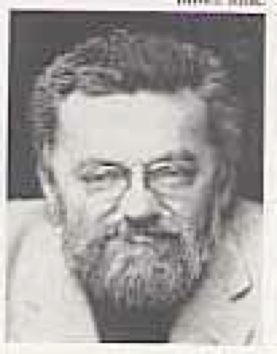Click HERE to go to home page -- (page 1)
Nikola Tesla--(Page 10)
WHAT IS INVENTION?
The dictionary describes invention in the classical sense...that of finding out, discovery. The Smithsonian's liberal definition of 'invention' certainly violates this definition; instead, supplanting it with entrepreneurship.
For example, if we asked the question, "who invented medicine?"
Would it be the first man who proposed theories of nature's properties, without ever knowing their possible applications?
Would it be a second man who then proved the existence of these properties--again without realizing their possible application?
Was it a third man who then built on this knowledge and made the first application of nature's properties by actually making a medicine and proving that it worked?
Or was it a fourth man who made a business from the first three men's discoveries?
While it would be grossly unfair to give the third man full credit because he used the knowledge gained by the first two, it should be unthinkable to afford any credit to the fourth man.
Such is the situation with Edison and Marconi.
They were clever businessmen who received much publicity, which usually creates false perceptions. The Smithsonian's wrongful depiction of electrical history simply enhances this perception.
CONCLUSIONS
Please do not believe that any 'one-man' invented our system of electricity, nor did any 'one-man' invent radio. The story of the rise of electricity is long and interesting, and should not be altered by biased historical interpretations of entrepreneurial experiments made by the many inventors who followed the 'Great Discoverers.' Thomas Edison is a classic example of a businessman who was successful in utilizing the talents of others to create many useful devices that became popular with people, but practical electricity came only from Nikola Tesla. Marchese Guglielmo Marconi was the first to send a message across the ocean. As a result of his business interests later, he is partly responsible for 'developing' radio...but he did NOT invent it. Men such as William Gilbert, Alessandro Volta, Hans Christian Oersted, Andre-Marie Ampere, Georg Simon Ohm, Michael Faraday, James Clerk Maxwell, Heinrich Hertz, and Nikola Tesla are the true inventors of electrical power and radio. Yet these science heroes are mentioned only in certain college courses. Therefore, their accomplishments are virtually unknown to most people. It is impossible to say which one of these great discoverers made the most significant contribution to science, but one fact is indelibly clear...Nikola Tesla made the final breakthrough in the electrical power area with his rotating magnetic field principle. He also made the final breakthrough in radio by devising his four-tuned circuit idea, which was the first viable radio system. Then he demonstrated how it would serve mankind in the future. His system is basic to all radios today. I tell about this in greater detail in the pages that follow.
THE NATIONAL INVENTORS HALL OF FAME
Another example of biased history is the NIHF web site telling our children that Charles P. Steinmetz, an engineer at the General Electric Company, is the inventor of our electrical distribution system.

Charles Proteus Steinmetz
Born April 9, 1865 - Died October 26, 1923
System of Distribution by Alternating Currents
Patent No. 533,244
Inducted 1977
This is such a preposterous absurdity that it is laughable...but I am not laughing. Instead, I am blowing the whistle on NIHF for being nothing more than puppets of industries eager to wave their own flags instead of telling factual history.
Tesla's seminal patents of 1888, on our now worldwide system of polyphase AC had to be licensed by GE to complete the Niagara Falls Power Station in 1895. This power station was the first large scale hydroelectric polyhphase AC generating plant to transmit power over long distances. Mr. Steinmetz was a brilliant engineer who later worked out the laborious details of electrifying the country, but the basis of his work was founded and patented by Tesla. Yet NIHF never mentions Tesla's name in their story. It is small wonder our children's science textbooks are riddled with misconceptions and downright errors.
NIHF has inducted Tesla into their ranks as one of their notable inventors, but instead of explaining the complete story of Tesla's monumental discoveries in AC and Radio and their importance to the world, they skirt the periphery and credit him only with the invention of the AC induction motor. They fail to identify Tesla's rotating magnetic field principle--basic to the AC motor--being the rock foundation of our worldwide system of of polyphase AC, without which the wheels of industry would stop and our homes would be without power. In short, the AC motor in reverse is a generator of power, but they never mention this elementary fact. To do so would be contrary to their story of Thomas Edison's role as our chief benefactor of electric power; he was NOT.
We all know what happens when the power fails...everything comes to a grinding halt. I'd say that Tesla's discovery of AC power transmission is rather important. Mr. Steinmetz merely helped implement Tesla's discovery. Nevertheless, we should not diminish his work any more than we should ignore Tesla's work.
NIHF also credits Guglielmo Marconi with the invention of Radio and ignores the fact that the U. S. Supreme Court, in a landmark decision, overturned Marconi's basic patent on Radio because Tesla's patents had priority. Tesla's patents serve as the rock foundation of all radios today.
__________________________________________________________
Click HERE to continue.
Click HERE to go back one page.
Click HERE to send me a message.